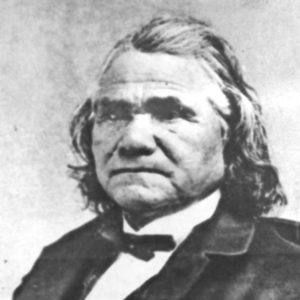calsfoundation@cals.org
Affair on the Osage Branch of the King's River
| Location: | Carroll County |
| Campaign: | None |
| Date: | April 16, 1864 |
| Principal Commanders: | Sergeant Josiah Watts (US); Captain James W. Cooper (CS) |
| Forces Engaged: | Company A, Second Arkansas Cavalry (US); Cooper’s Battalion (CS) |
| Estimated Casualties: | 6 killed, one missing (US); Not reported (CS) |
| Result: | Confederate victory |
This Civil War engagement demonstrates the continued presence of small bands of semi-autonomous Confederate commands along the Arkansas-Missouri border and exhibits late-war atrocities committed against captured black Union soldiers and laborers.
On April 16, 1864, a detachment numbering between twenty-six and thirty-six troopers from Company A of the Second Arkansas Cavalry (US), commanded by Sergeant Josiah Watts, foraged for supplies along the Osage Branch of the Kings River about twenty miles from their post at Berryville (Carroll County). Cooper’s Battalion of Brigadier General Stand Watie’s First Indian Brigade—commanded by Captain James Washington Cooper and variously estimated between eighty and 300 troopers—surprised and attacked the foraging party. Watts and his men initially repelled the rebel assault, charged twice, and briefly drove off the enemy. Cooper’s numerical strength, however, eventually decided the issue. Watts and his troopers withdrew, leaving the forage wagons to the enemy.
Reports of Union casualties vary. In his report to Brigadier General John B. Sanborn, commander of the District of Southwest Missouri, Colonel John E. Phelps of the Second Arkansas Cavalry reported three Union troopers and six wagons captured. The prisoners were quickly paroled. Phelps also reported the unceremonious murder of six black Union army teamsters. His final figures listed six killed and one missing. Captain Dennis W. Roberts of Company A, however, reported a total of ten Union killed and missing but did not categorically break down the numbers or specifically mention the teamsters. Roberts also reported only five wagons captured, all of which were destroyed by Cooper’s men. Neither officer was present at the incident, and the discrepancy in their figures may reflect the fact Roberts submitted his report on April 17, apparently prior to the return of the three parolees, whereas Phelps submitted on April 28. The figures in Phelps’s report appear to represent the final accounting of this engagement. Roberts commended Watts for his leadership and the escort for their bravery but implied that two or three unnamed individuals did not measure up to that standard. No Confederate account of the incident exists.
Phelps and Roberts also differed in their description of Cooper and the nature of his command. Phelps specifically referred to them as guerrillas, whereas Roberts only described them as “rebels.” Although Phelps reported the murder of the teamsters, Sanborn apparently did not further pursue the matter, and Cooper does not appear to have been held to account for the incident. Cooper continued to operate in the District of Southwest Missouri for the remainder of the war. Although he did not formally surrender, in May 1865, he negotiated an agreement to cease hostilities and encouraged his men to do likewise.
For additional information:
History of Northwest Arkansas. Chicago: Goodspeed Publishing Co., 1889.
Ingenthron, Elmo. “Civil War Atrocities in the Upper White River Valley.” White River Valley Historical Quarterly 1 (Summer 1962): 13–15.
The War of the Rebellion: A Compilation of the Official Records of the Union and Confederate Armies. Series 1, Vol. 34, Part 1. Washington DC: Government Printing Office, 1891.
Robert Patrick Bender
Eastern New Mexico University–Roswell
 Civil War Timeline
Civil War Timeline Military
Military ACWSC Logo
ACWSC Logo  Stand Watie
Stand Watie 




Comments
No comments on this entry yet.